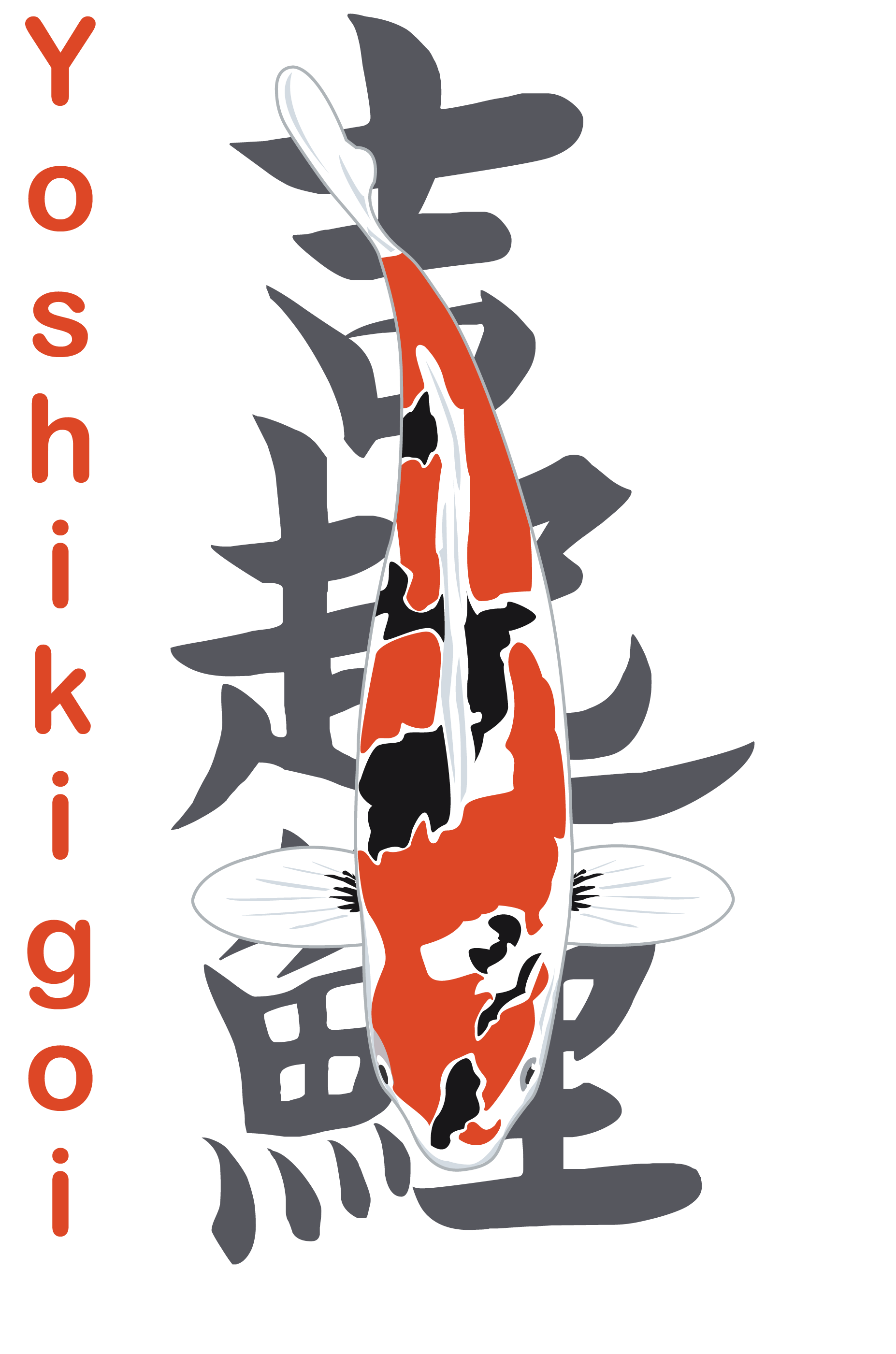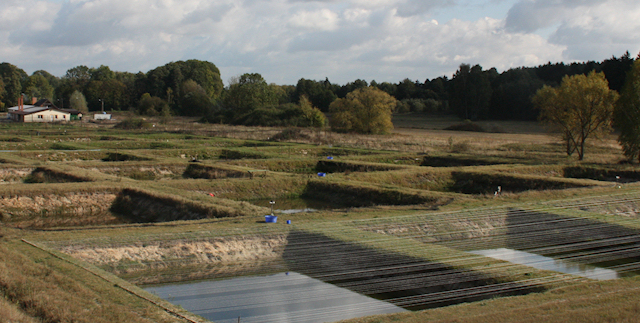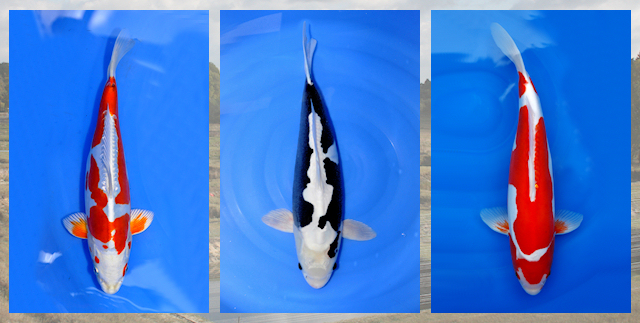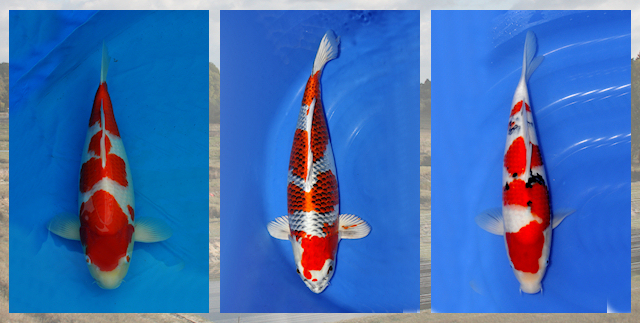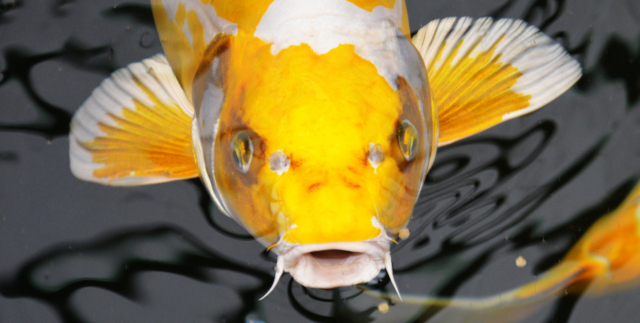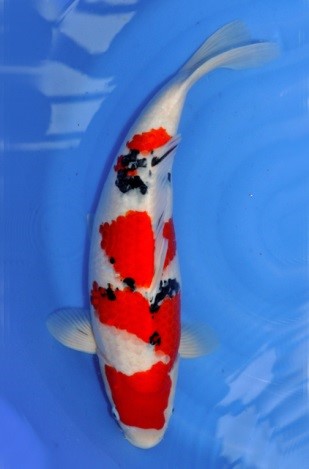
Sanke is probably the most difficult variety to breed.
That does‘nt mean that Sanke are difficult to breed, but that a good Sanke has very many selection criteria that he must meet before they are judged as really good. It is therefore easy to breed Sanke, but not to figure out of all the Sanke-breeding the top.
Most oft hem have or way too much black or too little and look like bad Kohaku. Even if the Sumi is present in the right quantity then it must be positioned correctly. Even if it is already positioned correctly the Sanke can be of very small value. The next thing that also has to be right is the Red pattern.
To describe a good Sanke the black (Sumi) needs to be in the right place and as much as possible in white. The Sumi must have a very deep black-lacquer look with a high gloss. Also the Sanke needs to have a Kohaku pattern. It may not have too much and not too little red on the head. The eyes should preferably be free of red and there is also no black on the head allowed. Then it’s one more advantage if there are beautiful black stripes (Tejime) present in the fins and the best should be if it is in an odd number. For example one on the left and two on the right. The white should be clear and deep and preferably the Red pattern is not allowed to go too much under the natural line. If all of these things are good the body needs to be good as well.
As you can see the Sanke has much more selection and assessment criteria than the Kohaku or the Showa. With a Kohaku is the most important point of a Sanke, What makes it a Sanke not there. By that i mean the black. A Showa is allowed to have a lot more or less black.
So with these two other varieties the Sanke has clearly a disadvantage.
Here a Sanke from our breeding which has now more than 70 cm. It has many of these characteristics.
